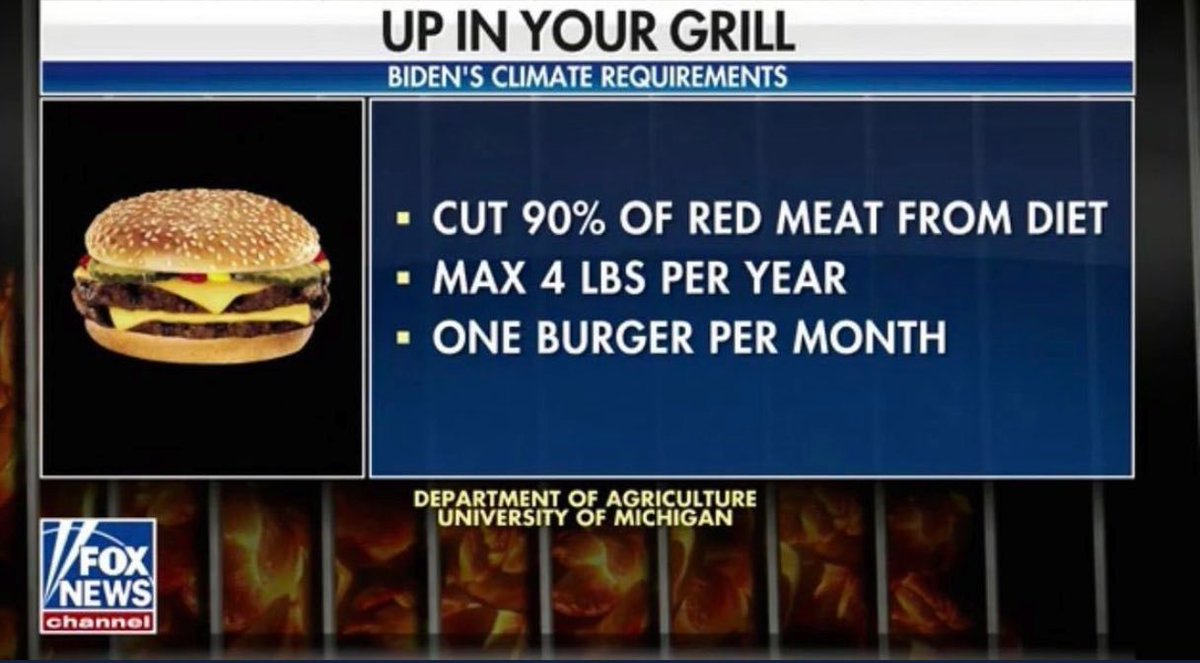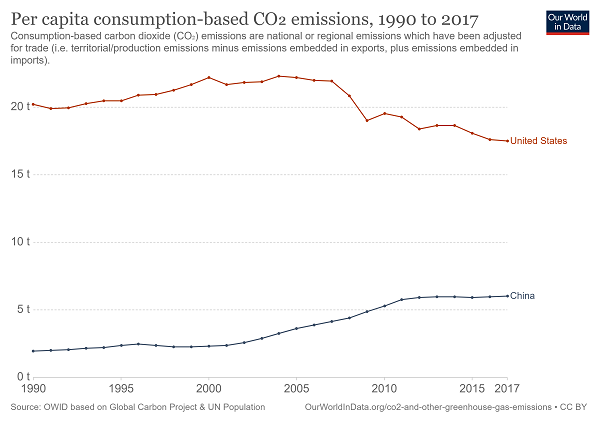Here& #39;s the Michigan University study that came up in the recent (overblown) #Biden/ #beef controversy: http://css.umich.edu/sites/default/files/publication/CSS20-01.pdf">https://css.umich.edu/sites/def... What would the carbon footprint reduction be when Americans would reduce beef intake with 90% (VERY hypothetical)?
Let& #39;s look at the numbers... THREAD https://abs.twimg.com/emoji/v2/... draggable="false" alt="👇" title="Rückhand Zeigefinger nach unten" aria-label="Emoji: Rückhand Zeigefinger nach unten">
https://abs.twimg.com/emoji/v2/... draggable="false" alt="👇" title="Rückhand Zeigefinger nach unten" aria-label="Emoji: Rückhand Zeigefinger nach unten">
Let& #39;s look at the numbers... THREAD
Here are the scenarios (converted to yearly data):
- baseline: Americans diets = 1.8 tCO2-eq/p/y
- halving animal foods = ?
- additional reduction of beef to 10% = ?
- baseline: Americans diets = 1.8 tCO2-eq/p/y
- halving animal foods = ?
- additional reduction of beef to 10% = ?
Here are the predicted savings (per person, per year):
- halving animal foods = 1.2 t CO2-eq/p/y --> -0.6 t
- + beef restriction (to 10%) = 0.9 t --> -0.9 t
- halving animal foods = 1.2 t CO2-eq/p/y --> -0.6 t
- + beef restriction (to 10%) = 0.9 t --> -0.9 t
In other words, on a TOTAL carbon footprint of 17 t CO2-eq/p/y for an average American, the dietary change would result in a % saving of:
- halving animal foods: 4%
- + beef restriction (to 10%): 5%
- halving animal foods: 4%
- + beef restriction (to 10%): 5%
On aggregate, this would mean a 224/330 MMT saving for the entire US, which on a TOTAL CO2-emission output of 6600 MMT equals 3-5% savings in national emissions.
This, by the way, is not all that far from the estimate by White & Hall in their 2017 PNAS modelling paper, using a different methodological perspective: if we would make the US livestock free, emissions would drop with some 3%.
https://www.pnas.org/content/114/48/E10301">https://www.pnas.org/content/1...
https://www.pnas.org/content/114/48/E10301">https://www.pnas.org/content/1...
Time & again, studies report the same footprint reduction for Western diets that severely restrict meat & dairy: 1-6%
Something, but not really a game changer. Plus, it undermines food traditions & the restrictiveness may come with nutritional trade-offs.
https://aleph-2020.blogspot.com/2019/06/greenhouse-gas-emissions.html">https://aleph-2020.blogspot.com/2019/06/g...
Something, but not really a game changer. Plus, it undermines food traditions & the restrictiveness may come with nutritional trade-offs.
https://aleph-2020.blogspot.com/2019/06/greenhouse-gas-emissions.html">https://aleph-2020.blogspot.com/2019/06/g...
Moreover, these calculations are based on several assumptions that need there own contextualization. An overview can be found here: https://aleph-2020.blogspot.com/2019/06/greenhouse-gas-emissions.html">https://aleph-2020.blogspot.com/2019/06/g...
If you read all of the above, you& #39;ll see that the "cows vs cars" comparison that the folks from Minnesota University are making in their document is very misleading. And yet, this comparison is recycled over & over again as a slogan, especially by people with anti-livestock bias.

 Read on Twitter
Read on Twitter " title="Here& #39;s the Michigan University study that came up in the recent (overblown) #Biden/ #beef controversy: https://css.umich.edu/sites/def... What would the carbon footprint reduction be when Americans would reduce beef intake with 90% (VERY hypothetical)? Let& #39;s look at the numbers... THREADhttps://abs.twimg.com/emoji/v2/... draggable="false" alt="👇" title="Rückhand Zeigefinger nach unten" aria-label="Emoji: Rückhand Zeigefinger nach unten">">
" title="Here& #39;s the Michigan University study that came up in the recent (overblown) #Biden/ #beef controversy: https://css.umich.edu/sites/def... What would the carbon footprint reduction be when Americans would reduce beef intake with 90% (VERY hypothetical)? Let& #39;s look at the numbers... THREADhttps://abs.twimg.com/emoji/v2/... draggable="false" alt="👇" title="Rückhand Zeigefinger nach unten" aria-label="Emoji: Rückhand Zeigefinger nach unten">">
 " title="Here& #39;s the Michigan University study that came up in the recent (overblown) #Biden/ #beef controversy: https://css.umich.edu/sites/def... What would the carbon footprint reduction be when Americans would reduce beef intake with 90% (VERY hypothetical)? Let& #39;s look at the numbers... THREADhttps://abs.twimg.com/emoji/v2/... draggable="false" alt="👇" title="Rückhand Zeigefinger nach unten" aria-label="Emoji: Rückhand Zeigefinger nach unten">">
" title="Here& #39;s the Michigan University study that came up in the recent (overblown) #Biden/ #beef controversy: https://css.umich.edu/sites/def... What would the carbon footprint reduction be when Americans would reduce beef intake with 90% (VERY hypothetical)? Let& #39;s look at the numbers... THREADhttps://abs.twimg.com/emoji/v2/... draggable="false" alt="👇" title="Rückhand Zeigefinger nach unten" aria-label="Emoji: Rückhand Zeigefinger nach unten">">










